Rare Rides Icons: The History of Kia's Larger and Full-size Sedans (Part XI)

Kia’s second attempt at a K7 (Cadenza in North America) arrived at a time when the company fully embraced a styling language of its own. More upscale and nicer to look at than the derivative generation of 2010 to 2016, the new Cadenza debuted in all global markets for 2017. Kia was hopeful the second Cadenza would sell better than the first one, particularly in North America. Any predictions on how that went?
With large and in-charge styling and a bevy of standard luxury features (discussed last time), Kia pitched the Cadenza to the entry-level premium full-size car buyer. Think of the customer who’d purchase a Toyota Avalon, a Buick Lacrosse, or one who might upgrade from an Impala or splurge on a low-trim Cadillac XTS. Competitive space, comfort, and sedate styling were all on offer with the new Cadenza.
Unfortunately, though the large sedan market in other places remained at least sustainable, such was not the case in North America. It had been a long decline for the large car, and even the headliner of the class (Avalon) receded from its heyday in the early 2000s. Avalon had 95,318 sales in 2005, which shrunk to 70,990 in 2013, and 32,000 in 2017. In between those points, there were plenty of sales valleys, as low as 28,390 in 2009.
The new 2017 Cadenza waded into the dying market segment with general praise for its level of comfort, a large interior living accommodation, and its suitcase of luxury features for a reasonable asking price. Features like Apple CarPlay and Android Auto, as well as a head-up display and surround-view cameras, were available equipment often excluded from much more expensive luxury cars. The 3.3-liter V6 motivated the Cadenza in an acceptable way, as did the new eight-speed automatic.
However, even with fancy tech features the Cadenza was very conservative in its looks and attitude and was highly unlikely to excite. While it had adequate power, it certainly wouldn’t win any driver engagement or acceleration awards. And though the equipment was nice, it was forced into three distinct packages in an all-or-nothing pricing methodology that is not typically popular with buyers.
In fact, there were no standalone options for the new Cadenza. The base model Premium trim asked $31,990 ($39,034 adj.), while the Technology was $38,990 ($47,575 adj.). Top specification was the Limited trim, which included all the features mentioned above. However, it was a big price jump between each trim. That was especially so from Premium to Limited, which asked $44,390 ($54,164 adj.). Per trim, the Cadenza was almost always more expensive than its Avalon competition.
Did customers bite? Not at all. In the US, Kia’s final year of the first-gen Cadenza saw 4,738 sales, and that figure improved slightly to 7,249 in 2017. Sales fell precipitously again in 2018 to 4,507, and again in 2019 to 1,577. Comparatively worse was Canada. Sales in 2016 of 166 Cadenzas fell to 124 in 2017, 83 in 2018, and 21 in 2019. Kia needed to take action!
The action chosen was a visual refresh for 2020 and a couple of engine updates. Gone for 2020 was the old 2.4-liter Theta II engine, replaced by a Smartstream 2.5-liter inline-four. Power increased from 187 to 195 horses in the engine swap. The other engine change didn't affect North America either: The 3.3-liter Lambda II engine with direct injection was replaced with a 3.5-liter Lambda II with multiport injection in some markets. Power decreased from 290 to 286 horses, and Cadenza found itself with 250 lb-ft of torque instead of 253. Interesting upgrade choice.
As far as visuals were concerned, changes occurred only to the front and rear of the Cadenza for its update. The most notable revision was to the Tiger Nose grille, as it grew larger and had fewer slats. There was also a new mesh grille texture in its background.
The change brought the grille away from Kia’s corporate appearance and more in line with the front end of a Ford Fusion. Ditto for the headlamps, which lost their trapezoidal shape and aw their Z light signature flipped to become more of an S. The headlamp housing itself transitioned to a more rectangular lens with four LED lighting elements on either side.
While the grille was less conservative and more aggressive looking, the headlamps were the opposite. Below there was a new lower valance that saw a more aggressive use of chrome trim, and the removal of the quad fog lamps on either side. Fog lighting was replaced with a new faux vent trim and a single smaller lamp. Above the front fascia, sculpting on the hood grew stronger and more muscular, and was also more Fusion-y looking.
Though the Z lighting element was revised at the front of the Cadenza, the one at the rear remained. It was housed inside some more upscale-looking brake lamps, which were larger and sharper than they were the previous year. Kia added a heckblende to the rear, right through the middle of the trunk lid.
Not fully lighted, the blende displayed some Morse Code dashes (a cue used on some of its other models). The trunk lid grew sharper looking with a revised upper edge and had more intense sculpting to make its design match with the new lighting. Having described the rear of the 2020 Cadenza I must draw your attention to the rear of a previously debuted vehicle: The 1997 Oldsmobile Cutlass. I didn’t want to see the similarities, either.
So then, a rapidly deployed new front and rear design that was more aggressive. Did that help the Cadenza’s sales? It never had a chance in Canada, where Kia pulled the Cadenza from the market after 2019. Two Canadian examples held out on lots until 2020 when they were finally sold. Nobody noticed the new styling in the US, as sales slumped over 2019’s figure to 1,265.
2020 proved to be a last-of for the Cadenza in North America, as Kia canceled it. Cadenza outlived most of its large sedan competition (all of which are dead now). Unsold Cadenzas remained on U.S. dealer lots through 2021 (249) and indeed 2022 when the last remaining one was sold. To date, your author has never seen a refreshed 2020 Cadenza.
Elsewhere in the world Cadenza’s sales failed to impress, and Kia pulled it from all global retail sales in January of 2021. It continues today in limited production as a sort of Cadenza Classic, for sale to fleet customers only. It must be an attempt to recover some of the development costs for such a short-lived model, as its replacement (the K8) is already in production.
Meanwhile, shortly after the second Cadenza arrived Kia was prepared to build an even larger car (again) as it introduced the brand new, luxurious, and rear-drive K9. We’ll pick up there next time, with a car that’s probably the most impressive vehicle Kia’s ever produced.
[Images: Kia]
Become a TTAC insider. Get the latest news, features, TTAC takes, and everything else that gets to the truth about cars first by subscribing to our newsletter.

Interested in lots of cars and their various historical contexts. Started writing articles for TTAC in late 2016, when my first posts were QOTDs. From there I started a few new series like Rare Rides, Buy/Drive/Burn, Abandoned History, and most recently Rare Rides Icons. Operating from a home base in Cincinnati, Ohio, a relative auto journalist dead zone. Many of my articles are prompted by something I'll see on social media that sparks my interest and causes me to research. Finding articles and information from the early days of the internet and beyond that covers the little details lost to time: trim packages, color and wheel choices, interior fabrics. Beyond those, I'm fascinated by automotive industry experiments, both failures and successes. Lately I've taken an interest in AI, and generating "what if" type images for car models long dead. Reincarnating a modern Toyota Paseo, Lincoln Mark IX, or Isuzu Trooper through a text prompt is fun. Fun to post them on Twitter too, and watch people overreact. To that end, the social media I use most is Twitter, @CoreyLewis86. I also contribute pieces for Forbes Wheels and Forbes Home.
More by Corey Lewis
Latest Car Reviews
Read moreLatest Product Reviews
Read moreRecent Comments
- Dale Had one. The only car I ever bought because of a review in a guitar magazine.Sure was roomy inside for such a small car. Super practical. Not much fun to drive even with a manual.Sent it to college with my stepson where it got sideswiped. Later he traded it in on an F-150.
- Bd2 Hyundai's designs are indeed among the most innovative and their battery technologies should allow class leading fuel consumption. Smartstream hybrids are extremely reliable.
- 28-Cars-Later So now H/K motors will last longer in between scheduled replacements. Wow, actual progress.
- AZFelix I have always wondered if the poor ability of Tesla cars in detecting children was due to their using camera only systems. Optical geometry explains that a child half the height of an adult seems to have the same height as that same adult standing twice as far away from the viewer.
- 28-Cars-Later Actually pretty appealing (apparently I'm doing this now). On a similar note, a friend of mine had a difficult situation with a tenant which led to eviction and apparently the tenant has abandoned a 2007 Jag S-Type with unknown miles in the garage so he called me for an opinion. Before checking I said $2-3 max, low and behold I'm just that good with the 3.0L clocking in at $2,3 on average (oddly the 4.2 V8 version only pulls $2,9ish) and S-Types after MY05 are supposedly decent.




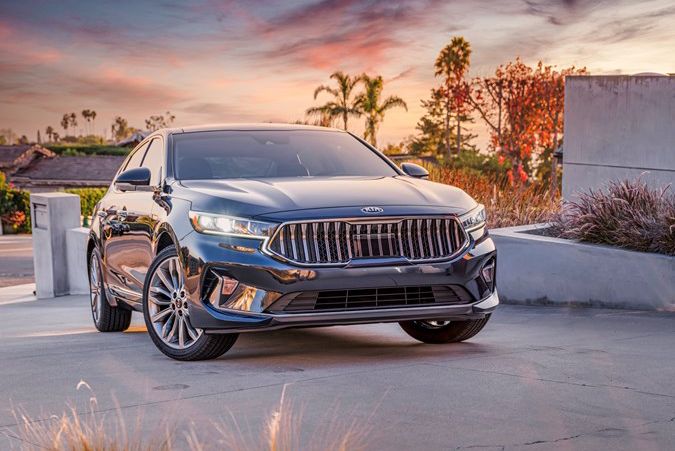




















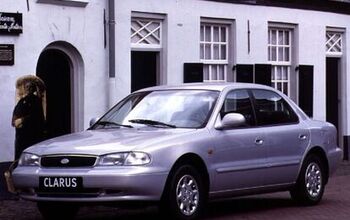
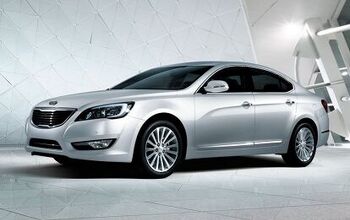
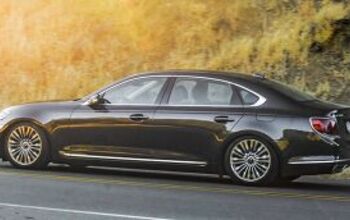
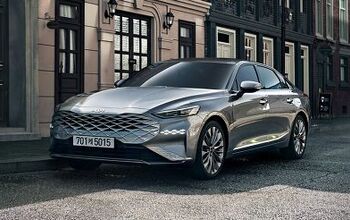











Comments
Join the conversation
When this came out I was really interested in it but there were only 2 on the lot in a 250 mile range. The closest one was not the trim I was looking for. The other issue was that the the only colors that were on the lots were black and silver.
It really seemed to me that Kia really wasn't interested in selling this.
As 'nice' as this car may have been, who in their target demographic would chose this over an Avalon? Particularly if the Avalon cost less.